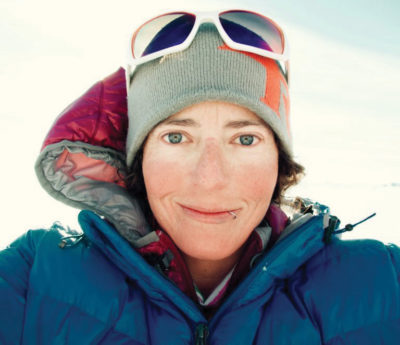Secrets of the Ice: How Glaciers Reveal the Story of the Earth
The first time Alison Criscitiello saw glaciers in Montana’s Glacier National Park as a middle school student, she was hooked. “I had learned about glaciers in a geology unit in class — but they didn’t seem real,” Criscitiello says. But that summer she “became fanatical” about ice.
At first Criscitiello was attracted to the frozen terrain as a climber, and she worked as a park ranger and big mountain guide in the Andes, Alaska, and the Himalaya. But as her interest in science developed, it was a desire to understand the role ice plays in regulating and recording the global climate that led her to earn the first Ph.D. in glaciology ever conferred by MIT.
“Our Earth records its history in ice. It’s this huge story that’s already been written, and it’s just lying there, waiting to be pulled out,” says Criscitiello, who’s gone on to become a University of Calgary adjunct assistant professor and the technical director of the Canadian Ice Core Archive.
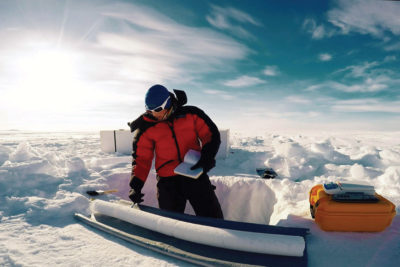
The capability to extract the planet’s climate story from a chunk of frozen water is found in a branch of earth science called ice core science — a discipline that has its roots in the post-World War II era when researchers were plunging into jungles, scaling mountains, probing the sea, and preparing to go to space. In the 1950s, French glaciologist Claude Lorius was studying Antarctica. It was there that a well-timed glass of whiskey led to a profound theory.
Lorius recounts in the 2015 documentary Antarctica: Ice and the Sky that he took some ice from a core sample and dropped it in a glass of his favorite whiskey. Savouring his drink, he noticed bubbles rising out of the ice as it melted. It suddenly struck him that the bubbles must be tiny bits of air from that long-ago time when they were frozen into the ice.
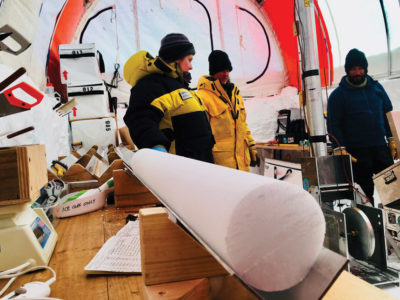
Falling snow contains small air pockets that trap atmospheric gases. The snow also collects anything blown in by the wind, including volcanic ash, pollution, and sea salt. In the coldest places on Earth, such as at the poles and in the high mountains, this snow never melts. Instead, it is buried under each subsequent layer of snow, gradually compressing the layers into ice and saving a record of the day it fell.
Once Lorius realized there could be information locked in the ice, scientists began developing the knowledge, skills, and technical equipment necessary to decode what it had to say. First they discovered a mechanism by which past temperatures could be deduced from ice crystals — by deciphering this, Lorius realized that scientists could begin to reconstruct part of the Earth’s past climate.
“The climate of the earth and how it’s changing impacts every being on the planet.”
By the 1970s, the Earth’s general climate models were starting to show a new and puzzling pattern. It appeared that carbon dioxide (CO₂) emissions were changing the weather, and that the planet was becoming warmer. Glaciologists realized those tiny air bubbles in the planet’s glacial ice could contain the information needed to measure whether CO₂ levels had risen since preindustrial times. What followed was a collaborative international effort to extract deep ice cores from Antarctica and Greenland, along with many shorter cores from mountain glaciers around the world.
In 1984, Lorius obtained a sample of the Vostok core, which had been drilled to over 2,000 meters deep (about 6,560 feet) and revealed information about the planet going back 420,000 years. As the cores were studied, scientists discovered that CO₂ and global temperature were linked through time. When CO₂ levels have been high, the planet has been warm; when the levels were especially low, glaciers covered the Earth.
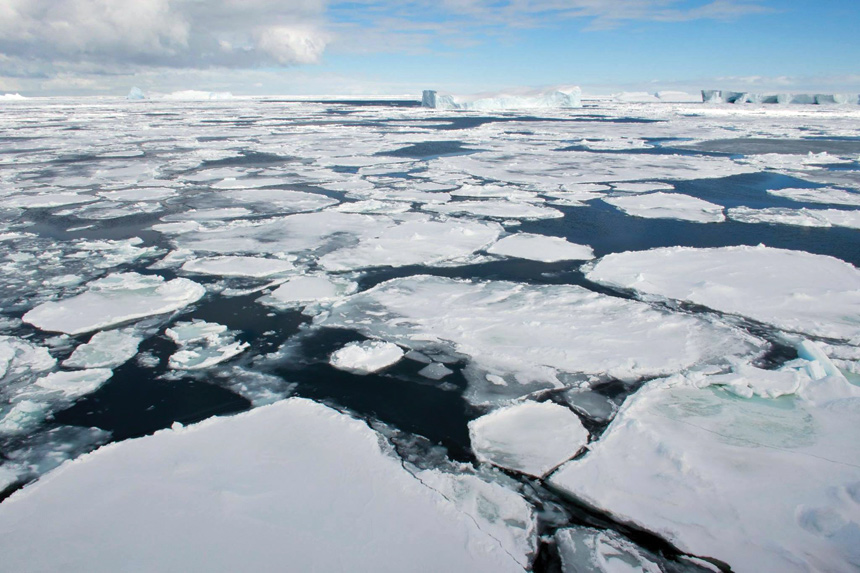
Published in 1999 in Nature magazine, Lorius’s research changed our understanding of the planet’s climate. The research also showed something deeply alarming: Historically, variations in atmospheric CO₂ levels have made only gradual rises and drops in the planet’s temperature, but since the Industrial Revolution, atmospheric CO₂ levels have risen at an unprecedented rate.
Science has been described as a cooperative endeavor in which many scientists work on small parts of a puzzle and together try to produce the most accurate possible image of how things are now, or once were, or will be. This is why a scientific theory is never really finished. In the case of climate change, the broad concept of warming that was first put forward by Lorius and his peers is still being refined and expanded on every day by younger scientists like Criscitiello.
“With the development of ground-penetrating radar and other technological advances, it is no longer best practice to just pick a place and drill,” Criscitiello explains. “We now know there’s lots of information to gather first to assist in locating ideal ice core drill sites.”
By working in places as ruggedly far-flung as Mt. Brown in Antarctica, the Agassiz Ice Cap on northern Ellesmere Island, and Mt. Logan in Canada — Criscitiello literally travels to the ends of the Earth in search of ice and information. Relying on both high-tech transport — planes, icebreakers, high-altitude helicopters, snowcats — and lower-tech options like skis and fat-wheeled bicycles, the scientific teams seek out ice sheets that meet very specific criteria. For example, outside the polar regions, it is essential to locate a cold-enough place with lots of snow, ideally with as close to zero movement as possible so the layers remain undisturbed. “Some things to look for in the data are clear layers and near-zero horizontal ice flow velocity,” says Criscitiello. Basically they look for ice that’s still where it was when the snow first fell, only deeper. When ice moves, it can shear and fold much like rock can, distorting the records it contains.
After first digging a trench in the snow and readying the drill site, the scientists extract hockey-puck-width cores in one-meter lengths, which are labelled and carefully stored in special insulated shipping boxes for transport to the lab. In some places, 100 meters (328 feet) of core covers about 1,000 years.
Back at the lab, samples from the cores are dated and tested. In the shallow part of the core, scientists can count years according to layers of snow. Criscitiello says it’s exciting when she locates something specific in the record, like the ash from a known volcanic explosion. She explains that volcanic events each have unique “fingerprints,” and the findings can corroborate other dating techniques.
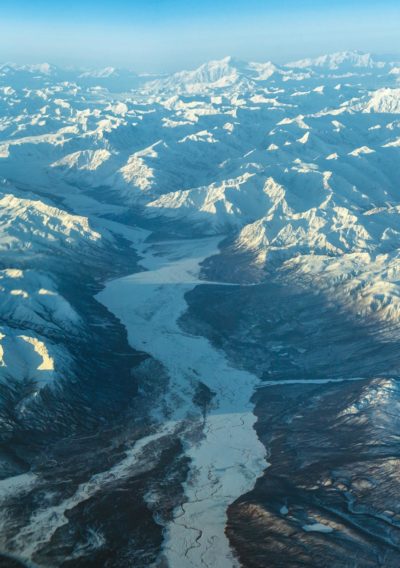
From there, more detailed research is possible. Each core contains enormous information, including air temperature history, atmospheric conditions, trade wind patterns, and sea ice composition. Each new set of tests gives scientists another piece of the puzzle detailing what mechanisms drive natural climate change and how human activity has altered this process.
While research is ongoing, the bulk of the ice is entered into the archives. In Alberta, this huge frozen library is kept at –40 degrees Fahrenheit, and the “books” amount to 1.5 kilometers (0.9 miles) of ice that have been preserved from such sites as the Devon Ice Cap, Agassiz Ice Cap, Penny Ice Cap, Prince of Wales Icefield, and Mt. Logan.
Scientists say the importance of this type of archive can’t be overstated. Even as ice core science technology improves, and we understand more and more of what the ice can tell us, glaciers in many locations on Earth are melting at an unprecedented rate. Criscitiello says there are places in the Canadian high Arctic that are now experiencing temperatures above 0° Celsius (32°F). “When these smaller ice caps experience surface melt, it can alter the chemistry within the snowpack.” She explains that for such places that have never been drilled, the climate records are already lost.
The risk now is that “the glaciers, the raw material for the ideas of tomorrow, will disappear,” Ice Memory project coordinator Jérôme Chappellaz told Wired magazine in December 2016. In a collaborative effort with UNESCO, scientists with the project are assembling ice cores from around the world. Chappellaz said that in the future, these heritage ice cores will be studied using new ideas and capabilities and will hopefully better show us how human activity is reshaping our world.
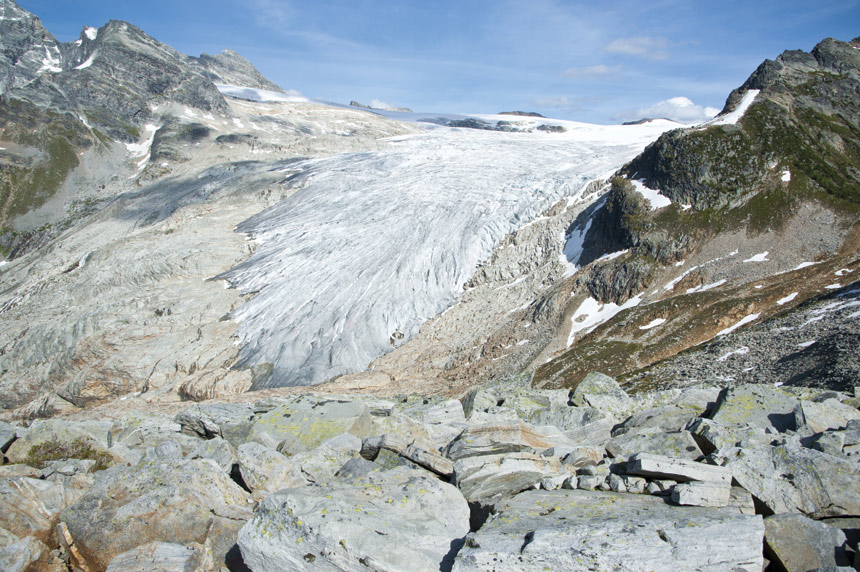
In a race against the melting, scientists like Criscitiello are heading to the most remote frozen places of the world to build up our library of ice cores. Difficult trips that in the past weren’t possible, like her upcoming one to Canada’s Mt. Logan scheduled over 2019 and 2020, take on even more importance as scientists seek out new cores that may contain subtle regional information not available anywhere else.
The other challenge Criscitiello and scientists face is finding grants and funding for complex research, which may only add fragments of information to the existing body of scientific knowledge. Criscitiello explains that while her own work is often focused on one timeframe and on one pinpoint on the Earth, when it’s combined with other work, the patterns emerge. “When you step back, you see the planet as a whole,” she says.
Glaciologists explain that deciphering the most complete version possible of our planet’s recorded story is essential. Not only could this ease our transition into a future that scientists are just beginning to predict, but learning more about how the planet works is one of the only tools we have for determining how we adapt to climate change in the future. “The climate of the Earth and how it’s changing impacts every being on the planet,” Criscitiello says.
Diane Selkirk’s last article for the Post was “Found Family” in the March/April 2018 issue. For more, visit dianeselkirk.com.
This article is featured in the January/February 2019 issue of The Saturday Evening Post. Subscribe to the magazine for more art, inspiring stories, fiction, humor, and features from our archives.
